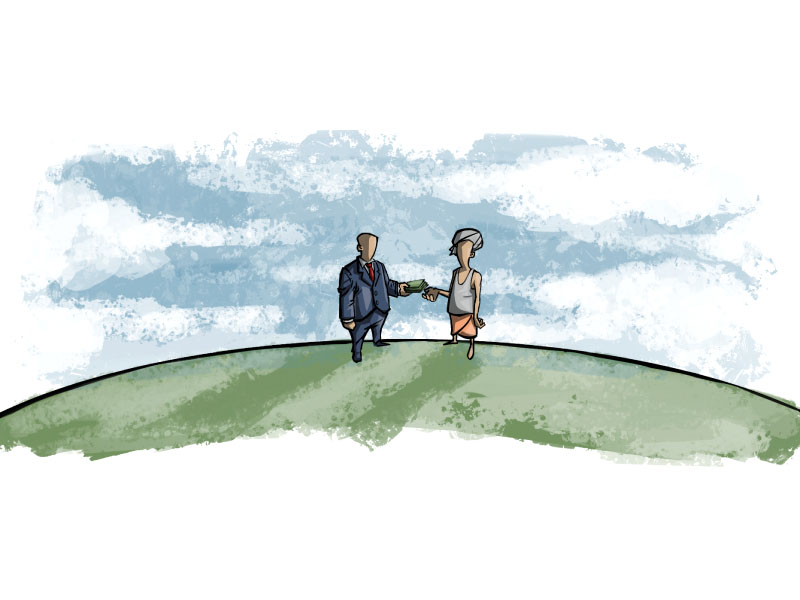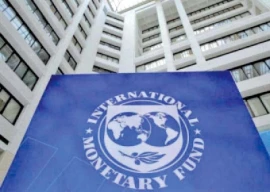
Pakistan has the third-best microfinance business environment in the world, according to The Economist Intelligence Unit’s analysis of the microfinance business environment in 55 countries.
In its recently released report titled “Global microscope on the microfinance business environment 2013,” the business information arm of The Economist Group puts Pakistan after Peru and Bolivia on the overall microfinance business environment ranking.
“Pakistan... is considered to have one of the most enabling environments for microfinance regionally and globally,” said the report, which ranks countries on the basis of two broad categories: Regulatory Framework and Practices, which examines regulatory and market-entry conditions; and Supporting Institutional Framework, which assesses business practices and client interaction.
Interestingly, Pakistan is nearly tied with Bolivia for the second position because the difference in their respective scores on the index is only 0.1 point.

“Pakistan is an extremely attractive microfinance market. We have a regulator (State Bank of Pakistan), which is ranked among the best in the world,” said Mohammad Mudassar Aqil, CEO of Kashf Microfinance Bank, one of Pakistan’s major microfinance banks, while speaking to The Express Tribune in an interview.
He said Pakistan has one of the most progressive sets of regulations for microfinance banking. “A fully functional credit bureau for microfinance banks with about 93% of the adult population of the country having a unique CNIC number is a great combination of all ingredients,” Aqil added. “What’s missing is the ability of the practitioners (of microfinance banking) to innovate. Now the onus is on us,” he observed.
Pakistan holds the third position in both ‘Regulatory Framework and Practices’, and ‘Supporting Institutional Framework’ categories. However, besides the two core categories, The Economist Intelligence Unit also adjusts each country’s score for political instability into the index.
Based on a complex scoring methodology, this category evaluates political shocks to the microfinance sector and general political stability. Pakistan performs rather poorly on this count, as it ranks 30 among the 55 economies when it comes to political stability.
The State Bank of Pakistan (SBP) tightened its prudential regulations that apply to microfinance banks by increasing minimum-capital requirements. It expanded the scope of potential microfinance clients in 2011 by raising the maximum income level for clients who can qualify for microloans.
While the regulator does not impose interest-rate caps, it does limit the size of loans.
The Economist Intelligence Unit says the launch of the Microfinance Credit Information Bureau (MF-CIB), which was rolled out in June 2012, has been a key development in microfinance business.
“The MF-CIB will be a positive registry (with information on all clients with an outstanding loan, rather than just defaulters) and will cover all types of players serving the industry,” it said.
The total number of active borrowers in Pakistan at the end of the last quarter of fiscal 2013 was 2.6 million, up 4% from the preceding quarter. The penetration rate of the microfinance banking sector has increased from 9.2% to 9.6% due to an increase in overall outreach, according to the latest data.
Published in The Express Tribune, October 19th, 2013.
Like Business on Facebook, follow @TribuneBiz on Twitter to stay informed and join in the conversation.
COMMENTS (12)
Comments are moderated and generally will be posted if they are on-topic and not abusive.
For more information, please see our Comments FAQ
1732434981-0/BeFunky-collage-(10)1732434981-0-405x300.webp)
















my name is jamshed masih from karachi pakistan i have 8 chaild i want to finincal sport for all my chaild education becouse i am jobless and home less so please help me for this aiem may God bless all thank,s
@khan: hmmmmm....research...from Canada...wow. WHY PEOPLE LIKE YOU THINKS OF OTHERS AS ABSOLUTE FOOLS?
@ Khan
In some discussions, you call yourself Indian while in others you refer yourself as 'we in Pakistan', WHOSE SIDE YOU ARE ON?
@khan: Standard discourse in pakistan - condemn everything with throwaway lines like "neoliberalism" and "last drop of blood" etc. You haven't said what exactly is wrong with it. And while you're at it please also suggest a solution/alternative.
If MicroFinace has been so successful,why is poverty in country increasing at a very dangerous pace?
@khan: look at it from a different perspective easy funds transfer quick small bussiness loans
@Lahori: when you have 9 kids you cant smile bub
I did a Masters degree in Canada and my research was on microfinance. It is nothing but a tool to bring the poor into banking system and get the last drop of blood from them. It is sheer neoliberalism.
This is a proud moment for Pakistan. Perhaps this impressive ranking can be attributed to the non-involvement of the government in this sector. Congratulations to all the stakeholders who made it happen.
We Pakistanis should learn to accept good news about Pakistan :)
An extremely important element in the discussion related to microfinance, that is almost always lost, is that this a bridge but not the end. Microcredit is a way to pull out extremely poor people out of poverty and enable them to survive better. BUT make no mistake about it, at 25% interest rates, almost none of these businesses flourish. The microcredit industry has failed to recognize its own pitfalls. Microcredit should be used to enable poor people a way to build a credit history and build entrepreneurial capital in the meantime. But after this, these entrepreneurs should be handed to the traditional banking sector, which can use a positive credit history to lend funds at more reasonable rates which will enable these businesses to flourish further as opposed to being bogged down with heavy interest payments constantly.